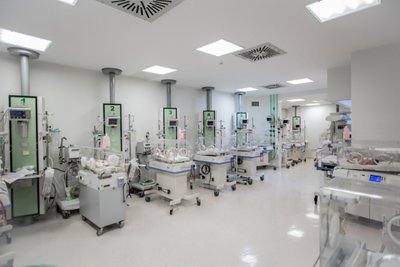Rapid Diagnostics & Antimicrobial Stewardship Can Guide Treatment for Sepsis Patients: Interview with Dr. Eric R. Wenzler
By the bioMérieux Editors | Reading time: 2 min
PUBLICATION DATE: APRIL 24, 2024
As pathogens change over time, they can become resistant to antibiotics, making it more difficult to treat infections that may lead to sepsis. This ongoing growth of antimicrobial-resistant bacteria continues to pose a threat to public health.
We sat down for a virtual interview with Eric R. Wenzler, PharmD, BCPS, BCIDP, AAHIVP, Assistant Professor in the Department of Pharmacy Practice at the University of Illinois at Chicago College of Pharmacy, to learn more about the role of diagnostics and stewardship intervention when caring for sepsis patients.
Balancing Sepsis and Antimicrobial Stewardship
For high-risk patients or patients with bloodstream infections, it is vital to administer empiric antibiotic therapy promptly. It is also imperative that antibiotic use aligns with antimicrobial stewardship (AMS) objectives. As Dr. Wenzler explains, there is “this sort of balancing act between trying to ensure that our empiric antibiotic therapy is tailored to the patient’s risk, but also broad enough so that we don’t have long delays in time to effective antimicrobial therapy that we know leads to increased mortality.” To strike the appropriate balance between sepsis protocol and AMS objectives, Dr. Wenzler says that we are “always walking this delicate kind of Goldilocks window between not too much, not too little, just the right amount.”
The incidence of sepsis with resistant infections has likely followed the general trend of increasing antimicrobial resistant infections, according to Dr. Wenzler, although many cases continue to be susceptible or even culture negative. Regardless, he says, “In this setting, our job in general is to optimize antimicrobial use.”
While balancing sepsis and antimicrobial stewardship is a challenge, there are best practices for collaborating with and supporting clinicians to optimize antimicrobial use in sepsis patients, especially those with resistant infections. Dr. Wenzler shares that in his experience, there are two most impactful ways to do that:
- knowledge of pharmacokinetic/pharmacodynamic (PK/PD) properties to optimize antimicrobial use
- rapid diagnostics to precisely identify the micro-organism responsible for the infection . “Rapid diagnostics in conjunction with antimicrobial stewardship intervention, especially in patients with bloodstream infections, have been shown to decrease mortality significantly, decrease length of stay, and cost,” Dr. Wenzler says.
Dr. Wenzler also shares his perspective on a study, which suggests that the timing of effective antibiotic administration for patients with sepsis and septic shock should be considered separately. In contrast to the study, Dr. Wenzler says that he views sepsis and septic shock as a progression of one into the other. While he agrees that septic shock patients are certainly more vulnerable and must be prioritized based on their risk, Dr. Wenzler notes that, “rapid, timely, effective antimicrobial therapy is important in all patients, whether they have a serious infection or not.” When administering antibiotic therapy to patients with bloodstream infections, it is vital to ensure that the “Five Rs” are followed: right patient, right drug, right dose, right duration, and right route.
Diagnostics and Teamwork Are Vital to Stewardship Efforts
Dr. Wenzler notes that the COVID-19 pandemic has demonstrated that collaboration between clinicians and the lab is a necessity, and it has highlighted the vital importance of diagnostics and the clinical lab. An increase in collaboration, coupled with the deployment of diagnostics that deliver timely results, can support a comprehensive approach to aligning stewardship objectives with sepsis care.
Knowledge of pharmacokinetic/pharmacodynamic (PK/PD) modeling, application of the CDC’s Core Elements, and guidance and quality benchmarks from Centers for Medicare and Medicaid Services (CMS), may also provide support. For example, CMS rules for C. difficile have helped drive efforts to reduce those healthcare-acquired infections in U.S. hospitals.
Finally, for all organizations, even those with limited resource capacity, investing in diagnostic technology may be the most optimal way to support sepsis protocol and stewardship objectives. “I think you’d be hard-pressed to find something else where it would be worth the return on investment that you get like you do with rapid diagnostics,” Dr. Wenzler states.
Opinions expressed in this article are not necessarily those of bioMérieux.
You may be interested in these articles
SHARE THIS ARTICLE:
- Sepsis


